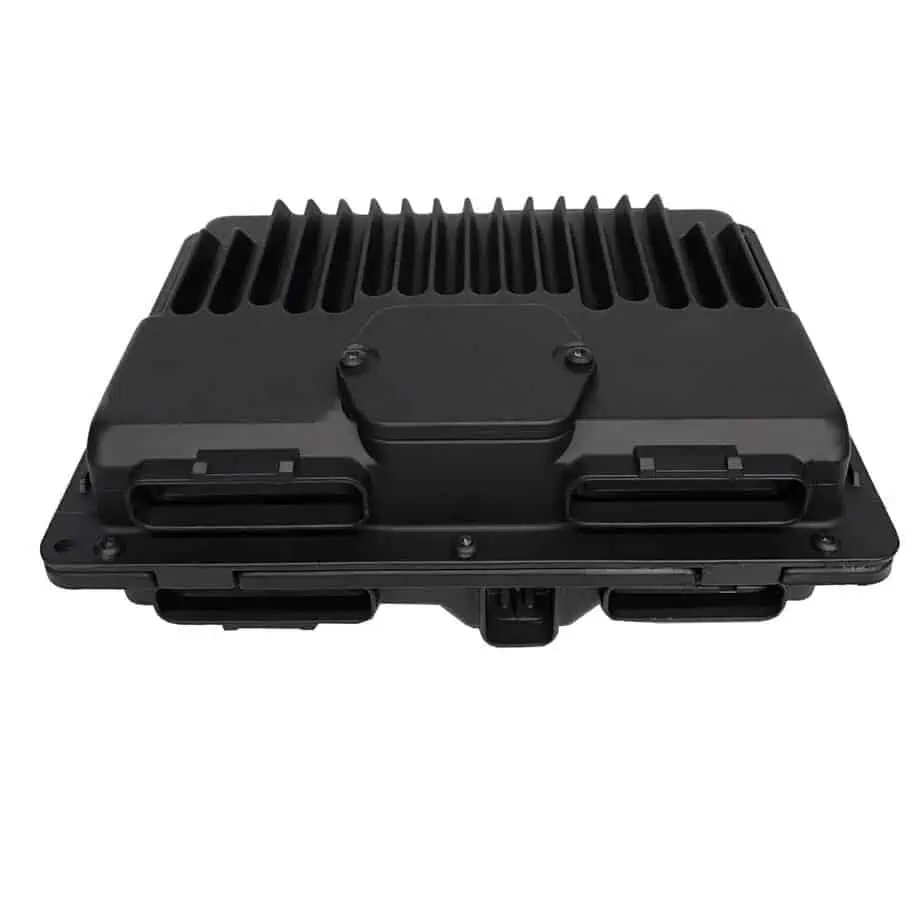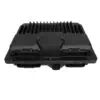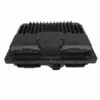Restore Peak Performance to Your Workhorse
Is your dependable Chevy 3500 suddenly giving you trouble? Erratic idling, frustrating transmission shifts, a persistent Check Engine Light, or even a complete failure to start can bring your work to a halt. These aren’t just annoyances; they’re symptoms that the very brain of your truck—the Powertrain Control Module (PCM)—may be failing. This isn’t the time for guesswork. This is the time for a precise, reliable solution that gets you back on the road with confidence. This unit is professionally programmed with the latest GM software updates specifically for your truck’s VIN, ensuring it works correctly right out of the box.
Warning Signs and How to Overcome Them
A faulty PCM can manifest in numerous ways, often mimicking other component failures. By replacing it, you can solve these issues at their source and enjoy a revitalized driving experience.
- ✔ Eliminate Stalling and Rough Idle: Regain the smooth, steady engine operation your truck was built for.
- ✔ Correct Harsh or Erratic Shifting: The PCM directly controls transmission logic, and a new module restores crisp, predictable gear changes.
- ✔ Boost Fuel Economy: A properly functioning computer ensures the optimal air-fuel mixture, preventing wasted gas and saving you money.
- ✔ Clear Persistent DTCs: Finally resolve stubborn trouble codes like P0601 (Internal Control Module Memory Check Sum Error) or P0605 (Internal Control Module ROM Error).
- ✔ Solve No-Start Conditions: Restore the critical signals for fuel and spark that a dead PCM can block, bringing your engine back to life.
- ✔ Regain Peace of Mind: Drive with the assurance that your truck’s most critical computer is functioning flawlessly.
Guided Installation for a Confident Fix
Replacing the PCM is a straightforward job you can tackle with basic hand tools. Our pre-programming service handles the most complex part, leaving you with a manageable installation. Follow these steps for a successful repair.
- Step 1: Safety First. Always disconnect the negative terminal from your truck’s battery before beginning any electrical work. This prevents accidental shorts and protects the vehicle’s electronics.
- Step 2: Locate the Module. On your 1998-1999 Chevrolet 3500, the PCM is typically found in the engine compartment on the driver’s side (LH), often near the battery or on the inner fender.
- Step 3: Disconnect the Harnesses. Carefully unclip and remove the large electrical connectors from the old PCM. Inspect the pins for any corrosion or damage before proceeding.
- Step 4: Remove the Old Unit. Unbolt the old module from its mounting bracket. It’s usually held in place by a few small bolts or nuts.
- Step 5: Install the New PCM. Mount your new, pre-programmed PCM securely onto the bracket. Reconnect the electrical harnesses, ensuring they click firmly into place.
- Step 6: Reconnect and Relearn. Reconnect the battery terminal. In many cases, you will need to perform a simple security relearn procedure (often called a VATS relearn) which involves cycling the key. Instructions are readily available online for your specific model.
A Mechanic’s Story: The Ghost in the Machine
“A customer brought in his ’99 GMC 3500 dually, a truck he used for his landscaping business. He was at his wit’s end. The transmission was shifting hard, it would stall at stoplights, and he’d already replaced the throttle position sensor and a few others based on forum advice. The problems persisted. We hooked up our high-level scanner and saw communication dropouts from the PCM. It wasn’t throwing a hard code every time, but it was clearly failing internally. We installed a VIN-programmed 1998-1999 Chevrolet 3500 PCM, performed the security relearn, and the truck ran like it was new. All those ‘ghost’ issues vanished. It’s a reminder that sometimes, the problem is the brain itself, not the parts it’s talking to.”
Tailored Fit for Your Ride
This module is a direct replacement for service numbers 09366810, 16250279, and 09355699. Please verify one of these numbers is on your original part to ensure compatibility. This unit is guaranteed to fit the following vehicles:
- 1998-1999 CHEVROLET 3500 PICKUP (Gasoline)
- 1998-1999 GMC 3500 PICKUP (Gasoline)
- 1998-1999 CHEVROLET/GMC 2500 PICKUP (Gasoline)
- 1998-1999 CHEVROLET/GMC 1500 PICKUP (5.0L, 5.7L)
- 1998-1999 SUBURBAN 1500/2500 (Gasoline)
- 1998-1999 TAHOE / YUKON (Gasoline)
- 1999 ESCALADE
- 1998-1999 EXPRESS / SAVANA VAN 1500/2500/3500 (Gasoline)
- 1998-1999 ASTRO / SAFARI
- 1998 BLAZER S10 / JIMMY S15 / S10 / S15 / SONOMA (4.3L)
- 1998 BRAVADA / ENVOY (4.3L)
- 1998 ISUZU HOMBRE (4.3L)
Note: After purchase, we require your vehicle’s VIN to program the module. This ensures it communicates perfectly with your truck’s specific systems and options.
Frequently Asked Questions
Is this module ready to install out of the box?
Yes, this 1998-1999 Chevrolet 3500 PCM is fully programmed to the VIN you provide. However, you will likely need to perform a simple security/anti-theft relearn procedure after installation for the vehicle to start. This procedure can typically be done without special tools.
How do I send you my VIN?
After you complete your purchase, you can add your VIN to the ‘notes’ section of your order. If you forget, we will contact you via email to request it before we ship your part.
Will this fix my transmission shifting problems?
In many cases, yes. The PCM is responsible for controlling transmission shift points and line pressure. A failing module is a very common cause of harsh, delayed, or erratic shifting in these trucks.
My original part number is 16250279. Will this work?
Absolutely. This module is the correct replacement for part numbers 16250279, 09366810, and 09355699. As long as your original module has one of these numbers, this part is a guaranteed compatible replacement.
Do I need a professional mechanic to install this?
Installation is generally straightforward for a DIYer with basic mechanical skills and tools. The most important part is the programming, which we handle for you. The only post-installation step is the security relearn, which does not require a mechanic.


